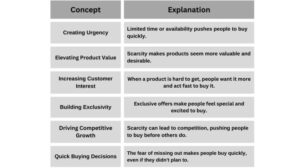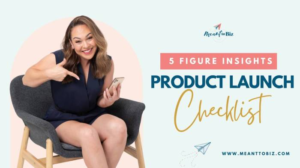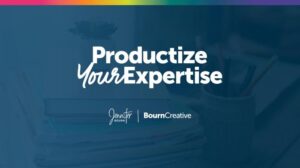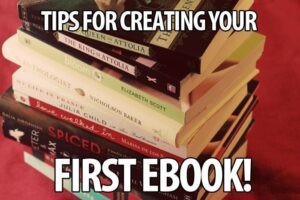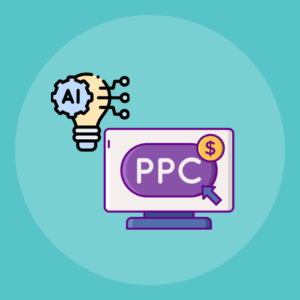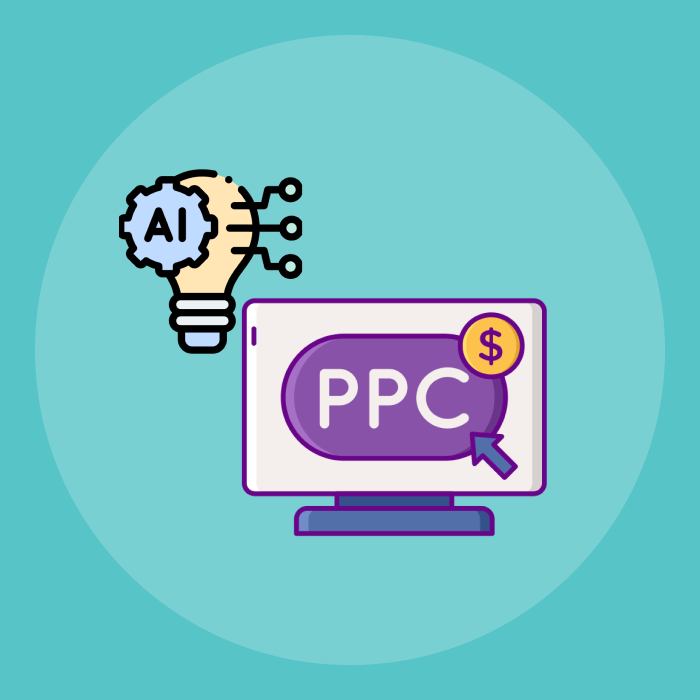
Using AI to boost PPC revenue is transforming the landscape of digital advertising, offering businesses unprecedented opportunities to enhance their campaign effectiveness. As traditional methods evolve, integrating artificial intelligence into pay-per-click strategies empowers marketers to leverage real-time data analysis and user behavior insights, ultimately driving improved ROI.
This exploration into AI-driven PPC strategies reveals how machine learning can refine selection, optimize bidding practices, and identify high-quality backlinks, ensuring that your advertising efforts yield measurable results. Whether you’re a seasoned marketer or a novice in the PPC realm, understanding the role of AI in this context is vital for staying ahead of the competition.
Leveraging AI in PPC Advertising
Artificial Intelligence (AI) is revolutionizing the landscape of pay-per-click (PPC) advertising by enabling marketers to optimize their campaigns with precision and efficiency. By harnessing the power of AI, businesses can significantly improve their return on investment (ROI) while minimizing the effort required for continual campaign adjustments. This transformation is largely attributed to AI’s ability to analyze vast amounts of data and derive actionable insights that were previously beyond reach.AI optimizes PPC campaigns through various methodologies, primarily utilizing machine learning to examine user behavior.
Machine learning algorithms process historical data to identify patterns and trends that inform ad targeting, budget allocation, and bid adjustments. By continuously learning from new data, these algorithms can adapt in real-time, ensuring that ad placements are not only relevant but also effective in reaching the desired audience.
Methods of Using Machine Learning to Analyze User Behavior
Machine learning plays a crucial role in understanding user interactions with ads. By employing specific techniques, marketers can gain insights that lead to more effective PPC strategies. The following methods illustrate how machine learning can be integrated into user behavior analysis:
- Predictive Analytics: Machine learning models can forecast future user actions based on past behavior, enhancing targeting accuracy.
- Segmentation: AI can categorize users into distinct groups based on shared characteristics, allowing for personalized ad experiences that resonate with each segment.
- Ad Performance Analysis: By analyzing click-through rates (CTR) and conversion metrics, machine learning algorithms can identify which ads perform best and under what conditions, facilitating informed decisions on ad placements.
- Dynamic Remarketing: AI-driven remarketing strategies can leverage user data to create personalized ads that follow users across different platforms, increasing the likelihood of conversion.
With the ever-growing pool of data, AI tools are essential for enhancing selection and bidding strategies. Utilizing advanced algorithms, these tools can assess performance in real-time, allowing for more strategic bidding and improved ad placement.
Examples of AI Tools for Selection and Bidding Strategies
Several AI tools have emerged to support marketers in optimizing their PPC campaigns, particularly in selection and bidding strategies. These tools not only simplify the process but also enhance overall campaign effectiveness:
- Google Ads Smart Bidding: This AI feature automatically adjusts bids based on the likelihood of conversion, taking into account multiple signals such as device, location, and time of day, to maximize ROI.
- WordStream: This tool uses machine learning to analyze performance and suggest high-performing s tailored to specific industries, helping marketers focus their efforts efficiently.
- SEMrush: With its AI capabilities, SEMrush provides insights into trends and competitive analysis, allowing businesses to adapt their strategies accordingly.
- AdRoll: This platform employs AI to optimize ad placements across various channels, enhancing visibility and engagement based on historical performance data.
By integrating AI into PPC advertising strategies, marketers can achieve a level of optimization that drives results and fosters sustained growth in revenue. The continuous evolution of AI technology further underscores its significance in the digital marketing realm, making it an invaluable asset for any business aiming to enhance its online presence.
Building Link Popularity through AI
In the ever-evolving landscape of digital marketing, building link popularity remains a cornerstone strategy for enhancing website visibility and authority. Artificial Intelligence (AI) has emerged as a powerful ally in this endeavor, providing innovative tools and methodologies to streamline backlink acquisition processes. By harnessing AI, businesses can not only identify high-quality backlink opportunities but also monitor and optimize their link-building strategies effectively.The role of AI in identifying high-quality backlink opportunities cannot be overstated.
AI tools can analyze vast amounts of data to pinpoint websites with strong domain authority and relevant content that aligns with your niche. Utilizing machine learning algorithms, these tools assess various factors such as website traffic, user engagement metrics, and backlink profiles to determine the best candidates for your backlink strategy.
AI Tools for Monitoring Link Performance
Establishing a robust strategy to monitor link performance over time is crucial for maximizing the benefits of your backlinking efforts. AI technologies can simplify this task by providing real-time analytics and insights into how each backlink is performing. A comprehensive monitoring strategy may include the following components:
- Automated Reporting: AI tools can generate regular performance reports that highlight changes in traffic, rankings, and engagement metrics related to specific backlinks.
- Alert Systems: Set up alerts for when backlinks lose effectiveness, allowing you to take prompt action, such as reaching out to the linking site or improving the linked content.
- Competitor Analysis: Use AI-driven platforms to analyze competitor backlink profiles, identifying new opportunities and benchmarks for your own link-building efforts.
In addition to monitoring, AI can significantly enhance content creation, which in turn attracts organic links. By leveraging natural language processing (NLP) and predictive analytics, AI can identify trending topics within your industry that resonate with your target audience. Key techniques include:
- Content Optimization: AI tools can assess existing content for relevance and engagement, suggesting optimizations that can make the content more shareable and link-worthy.
- Topic Generation: By analyzing social media trends and search engine queries, AI can help generate new content ideas that are likely to attract backlinks based on current interests.
- Personalization: AI can tailor content to specific audience segments, increasing the likelihood of shares and organic backlinks by addressing the unique preferences of different groups.
“Utilizing AI not only simplifies link-building processes but also creates a more strategic approach to content creation, ultimately driving organic traffic.”
Enhancing Revenue through Product Creation and Launching

The advent of artificial intelligence has revolutionized the way businesses approach product creation and launching. By leveraging AI tools, companies can identify trending product ideas, streamline their launch processes, and ultimately enhance their revenue streams. This section will Artikel a framework for using AI in product development and provide a structured approach to executing successful product launches.AI can be a game-changer in identifying trending product ideas.
By analyzing vast amounts of data from social media, online searches, and consumer behavior, AI can highlight emerging trends and consumer needs. This data-driven approach not only minimizes the risks associated with product development but also increases the chances of creating successful products that resonate with the target audience.
Framework for Identifying Trending Product Ideas
To effectively use AI in identifying product ideas, companies can follow a structured framework. This framework includes several key steps that utilize AI technologies to ensure that products meet current market demands.
1. Data Collection
Utilize AI algorithms to gather data from various online platforms, including social media, e-commerce sites, and forums. This data should encompass customer reviews, search trends, and discussions around potential product categories.
2. Trend Analysis
Implement natural language processing (NLP) techniques to analyze collected data. Identify s and sentiments associated with products in demand, and track their frequency over time.
3. Market Gap Identification
Use predictive analytics to determine gaps in the market. AI can help in identifying areas where consumer needs are unmet or where there is less competition, allowing businesses to target these opportunities.
4. Idea Generation
Employ machine learning models to generate product ideas based on the trends and gaps identified. These models can suggest product features, designs, and variations that align with consumer preferences.
5. Validation
Before launching a product, use AI tools for A/B testing to gather consumer feedback on prototypes or concepts. This step ensures that the final product design aligns closely with market expectations.
Step-by-Step Process for Implementing AI in Product Launch Strategies
The implementation of AI in product launch strategies requires a methodical approach to ensure alignment with business goals and market needs. Below is a concise process for integrating AI into product launches.
1. Define Objectives
Clearly Artikel what you aim to achieve with the product launch, such as target sales, market penetration, or customer acquisition.
2. Develop a Launch Plan
Create a comprehensive plan that includes timelines, marketing tactics, and distribution channels. This plan should integrate AI-driven insights to make informed decisions.
3. AI-Driven Marketing Campaigns
Utilize AI to design personalized marketing campaigns. AI can analyze customer data to tailor messages, improving engagement and conversion rates.
4. Performance Monitoring
Post-launch, continuously use AI analytics tools to monitor product performance. This data will help identify what’s working and what areas need adjustment.
5. Feedback Loop
Establish a feedback mechanism to gather insights from customers post-launch. Use AI to analyze this feedback and refine future product offerings and strategies.
Examples of Successful Product Launches Driven by AI Insights
Several companies have successfully leveraged AI to enhance their product creation and launch strategies. One notable example is Nike’s use of AI in their product development process. By analyzing consumer data and preferences, Nike was able to predict the demand for specific shoe designs, leading to highly successful launches.Another example is Unilever, which utilizes AI to analyze social media trends and consumer sentiments.
This approach has enabled them to identify popular product ideas quickly, resulting in successful launches that meet the evolving demands of consumers. In the tech industry, companies like Samsung have employed AI algorithms to forecast market trends, allowing them to innovate and launch new smartphone models that have resonated well with users. These successful cases illustrate how AI-driven insights can lead to substantial revenue growth through effective product creation and launching strategies.
Final Summary

In conclusion, embracing AI as a pivotal element in your PPC strategy can significantly enhance revenue streams and streamline campaign processes. By utilizing sophisticated tools for user behavior analysis and performance monitoring, businesses can not only optimize their current marketing efforts but also anticipate future trends. The proactive application of AI insights ensures that your advertising strategies remain relevant, effective, and profitable in an ever-evolving digital marketplace.
FAQ Insights
How does AI improve PPC campaign performance?
AI improves PPC performance by analyzing vast amounts of user data to optimize bidding strategies, enhance targeting, and predict user behavior, which leads to higher conversion rates.
What are some popular AI tools for PPC?
Popular AI tools for PPC include Google Ads Smart Bidding, Adzooma, and WordStream, each offering functionalities that streamline campaign management and optimization.
Can AI help in identifying new trends for product launches?
Yes, AI can analyze market data and consumer behavior patterns to identify trending product ideas, helping businesses launch products that align with current demands.
Is AI capable of managing PPC campaigns autonomously?
While AI can automate many aspects of PPC management, human oversight is still essential to ensure alignment with overall marketing strategies and brand values.
How do AI-driven strategies affect budget allocation in PPC?
AI-driven strategies can lead to more efficient budget allocation by identifying high-performing s and ad placements, allowing for better investment of resources in areas that yield the best returns.

